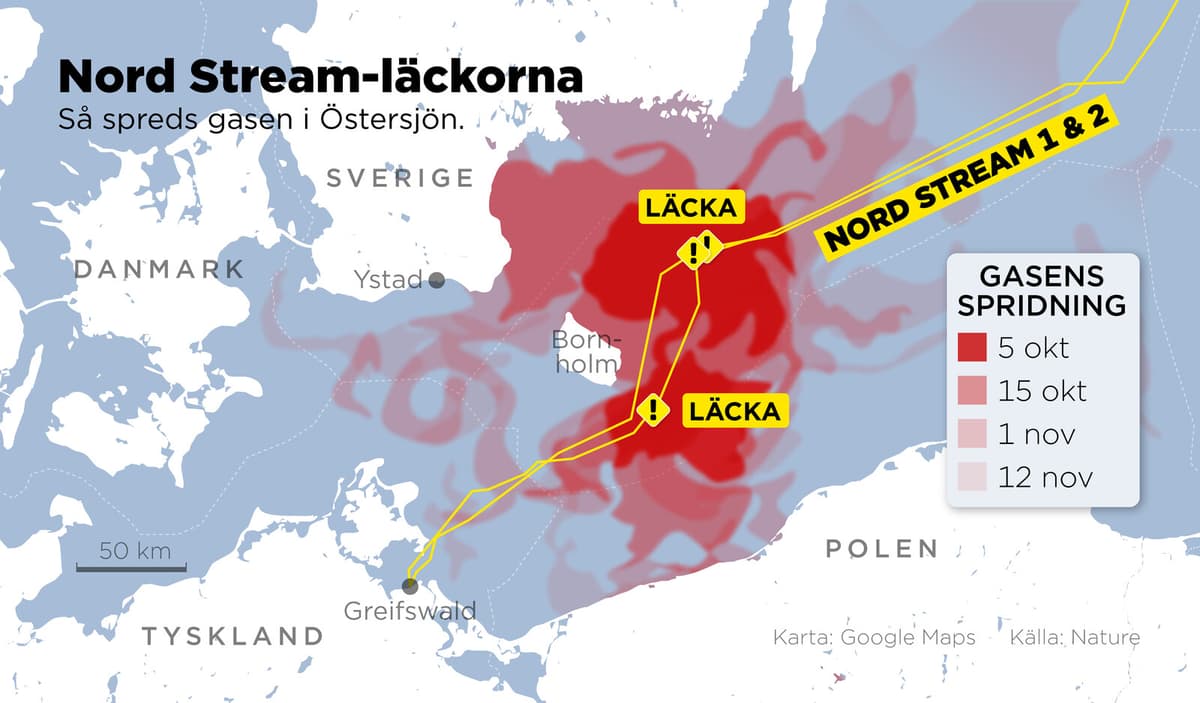How much gas actually reached the atmosphere after four explosions tore apart the gas pipelines has been difficult to calculate, but now researchers affiliated with the UN Environment Programme Unep have come to the conclusion that it was 465,000 tons, according to a study published in Nature.
The calculations were made with the help of, among other things, simulations of the leaks, which were then compared with actual measurements from aircraft, satellites, and towers that monitor the atmosphere.
Methane is a potent greenhouse gas, and according to the researchers, it was the largest methane emission linked to a single event ever, while it only accounted for 0.1 percent of human methane emissions in 2022.
Used "ocean glider"
In a side study in Nature Communications, the Swedish foundation Voice of the Ocean has taken a closer look at the gas that remained in the sea. Although most of it bubbled up to the surface and disappeared, a significant amount dissolved in the water.
We estimate the amount of dissolved methane to be between 9,000 and 15,000 tons in the water. It's of course a very significant amount, says article author Martin Mohrmann.
With the help of an ocean glider – a tool that can dive down to the bottom to make measurements – and sensors on a ferry that traffics between Germany and Finland, methane samples could be taken shortly after the leaks.
Spread far
Methane occurs naturally in the sea when, for example, organic matter breaks down. But in connection with the leaks, the levels became extreme.
A week after, we observed concentrations that were hundreds, partly thousands of times higher than natural concentrations. They spread very far and covered a large part of the Bornholm Basin, says Mohrmann.
14 percent of the Baltic Sea is estimated to have had levels more than five times higher than normal, in an area from Denmark, via the Blekinge coast up to Gotland and down to the Polish and German coasts. Eight marine protected areas were exposed to over 100 times higher methane concentrations than normal levels.
It's actually not explored what such high methane concentrations can lead to. What makes me hopeful is that methane is not so toxic, so in the short term, it probably won't have a big impact. But when we think about the high concentrations and the long time period, it can absolutely have some impact, says Mohrmann.
The measurements were concluded after three months, by which time the levels had returned to normal.
Gustav Sjöholm/TT
Background: Nordstream and methane
TT
On September 26, 2022, four explosions occurred on the gas pipelines Nordstream 1 and 2 near Bornholm. The gas pipelines run from Russia to Germany on the bottom of the Baltic Sea. Although the pipelines were not in use, they were filled with natural gas, and the powerful explosions destroyed long sections of three of the four pipelines.
Methane – which natural gas mainly consists of – bubbled quickly up to the surface, where they formed four mounds of foamy seawater, some several hundred meters in diameter.
Methane is a much more potent greenhouse gas than carbon dioxide, although it breaks down faster in the atmosphere.





